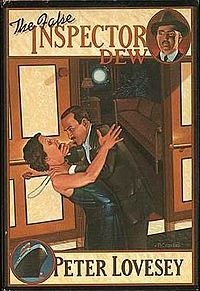 Almost is the key word in the above title. Struggling to retrieve the joy and inspiration I acquire when reading has been tough, and tedious. I’ve opened and begun a slew of books. Some deserved to be abandoned quickly, others may have had potential that I ignored, and some were obviously quite good, and those are
Almost is the key word in the above title. Struggling to retrieve the joy and inspiration I acquire when reading has been tough, and tedious. I’ve opened and begun a slew of books. Some deserved to be abandoned quickly, others may have had potential that I ignored, and some were obviously quite good, and those are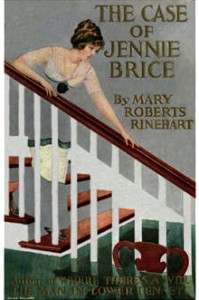 the ones that try my sanity, because there is no logical reason to NOT read and delight in doing it.
the ones that try my sanity, because there is no logical reason to NOT read and delight in doing it.
I thought I’d ruminate on a pile of discards, give a little synopsis of each, and my fevered reasoning behind not continuing, if I could find one. Because sometimes there is no understanding of why I can’t continue a title, I just can’t.
I began a Mary Roberts Rinehart, The Case of Jenny Brice, looking for her usual overwrought heroine and ‘had she but known’ plot. Fun reading most days. But the narrator’s voice irked me, and the storyline of a flood drowned any enthusiasm I may have had. And, I was reading the Dell Mapback version, which should have made the experience a bunch more fun with the map to follow, the character descriptions, and general oldness of the paper. The fact that the first paragraph casually mentions the body of a drowned pet dog, sealed its fate. I dropped it after half a chapter. Another Rinehart was also discarded—The Yellow Room—I followed it through several chapters, the charred corpse in the closet caught my eye. But my eye had other plans and escaped. So, I guess melodrama was not the ticket at the moment.
I decided then, that what I needed was a break from crime fiction, so I hefted an oversized thick paperback of Ladies, and the Not-So-Gentle Women about four gilded age millionaire wives taking on society. It immediately bored me to tears. Down goes nonfiction. Fast.
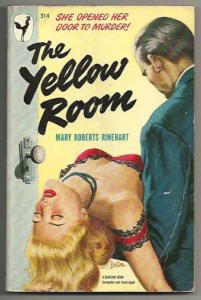 I had particularly chosen a book when in a B&N, because the subject fascinates me—Consciousness Beyond Life, The Science of Near Death Experience. But I realized delving in, that reading about death was depressing me more, so again, I ditched the read to move on.
I had particularly chosen a book when in a B&N, because the subject fascinates me—Consciousness Beyond Life, The Science of Near Death Experience. But I realized delving in, that reading about death was depressing me more, so again, I ditched the read to move on.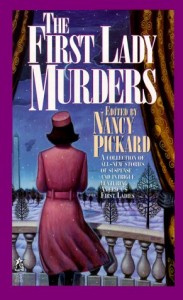
So, my pathetic brain said, “read something fast and light. I know, I’ll re-read some of my top mysteries of all time. ” I’d bop two birds by restarting my reading Mojo, as well as help me return to my long neglected list. Sigh. I LOVE Peter Lovesey, and The False Inspector Dew is a masterpiece of plot unravelings, with the real life murderer Dr. Crippen at the center of the story. But upon opening the paperback cover, I balked at reading it again, thinking, “no, I need something fresh, something I’ve not read before to fire my imagination” and The Lovesey wouldn’t fit the fresh. Nor did Puzzle for Puppets by Patrick Quentin, an Iris and Peter Duluth story set during the War years in San Francisco, where nary a hotel room is available for Peter on leave, to spend with his gorgeous actress wife. Marionettes are a factor in the story–another love of mine. I made it though several chapters as Peter is being set up as a patsy. But it stalled for me at some cocktail lounge and sputtered out.
OK, so re-reading wasn’t the answer. Maybe some short stories could ease me back in. I have a couple gigantic tomes that can also be used as doorstops, but I chose a specific theme—US President’s wives. The First Lady Murders, edited by the excellent Nancy Pickard offers a variety of writers taking on historical figures. Published in 1999, two first ladies aren’t in the running obviously, and among the ones that were, I couldn’t find a lady whose story piqued even a little curiosity. Ugh. Maybe a mystery starring presidential pets would have given me, paws.
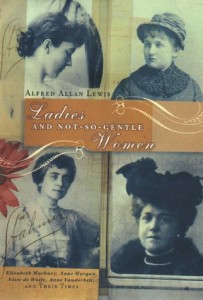 An old chestnut in 1970s Perennial form asked, Who Is The Next? Who knows, I didn’t get past the woman flier landing on the lawn of an estate and the staid, one dimensional characters wandering around the requisite mansion. I was disappointed because the Perennial series had brought forth some real classic winners for me in the past—like The Birthday Murder. So Who Is The Next became a question as to what book would be discarded soon.
An old chestnut in 1970s Perennial form asked, Who Is The Next? Who knows, I didn’t get past the woman flier landing on the lawn of an estate and the staid, one dimensional characters wandering around the requisite mansion. I was disappointed because the Perennial series had brought forth some real classic winners for me in the past—like The Birthday Murder. So Who Is The Next became a question as to what book would be discarded soon.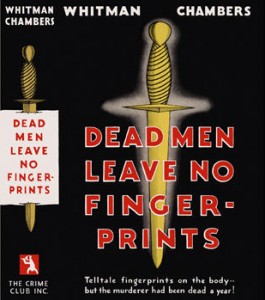 Turned out to be an historical mystery I’ve held on to for a decade or more—A Free Man Of Color by Barbara Hambly. A Mardi Gras couldn’t hold me, although I immediately found the story engrossing and thought—”finally, this one will break the curse.” I read a chapter and then just didn’t pick it up again. 1833, New Orleans, a creole physician and music teacher, Benjamin January attempts to find the murderer of a beautiful octoroon. What’s not to like? This is one of those books where there ls no good reason why I shouldn’t have continued and immensely enjoyed myself. It just didn’t happen.
Turned out to be an historical mystery I’ve held on to for a decade or more—A Free Man Of Color by Barbara Hambly. A Mardi Gras couldn’t hold me, although I immediately found the story engrossing and thought—”finally, this one will break the curse.” I read a chapter and then just didn’t pick it up again. 1833, New Orleans, a creole physician and music teacher, Benjamin January attempts to find the murderer of a beautiful octoroon. What’s not to like? This is one of those books where there ls no good reason why I shouldn’t have continued and immensely enjoyed myself. It just didn’t happen.
I then went the serious lit route, and started Songs for the Missing, by a favorite author, Stuart O’Nan. Do yourself a favor and read anything he’s written, but in particular the non fiction account of the horrible circus tent fire tragedy—his storytelling of this event haunts me still. And it’s that amazing ability that ultimately had me swerve away from Songs—my pysche wasn’t prepared to go to such a realistic place at that point. His work will be one I definitely return to at a more receptive time.
I can’t say the same about House Party Murder, by the well known author, Colin Ward. What? Never heard of him? Neither had I, and I wish I’d kept it that way. Tiring, is the only description I can find—but the synopsis claims different:
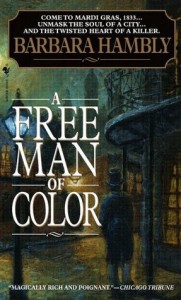 “Here is a mystery which is not only astute, well thought out, and breathless, but a mystery with highly amusing characters, gay, witty conversation, and an entirely logical, true to life climax. Colin Ward, a newcomer to the American field, has established a high mark for English mysteries in the House Party Murder.”
“Here is a mystery which is not only astute, well thought out, and breathless, but a mystery with highly amusing characters, gay, witty conversation, and an entirely logical, true to life climax. Colin Ward, a newcomer to the American field, has established a high mark for English mysteries in the House Party Murder.”
I went through many chapters of Dead Men Leave No Fingerprints before finally admitting defeat. The first lines gave such promise: “Little Abe Bloom, fat and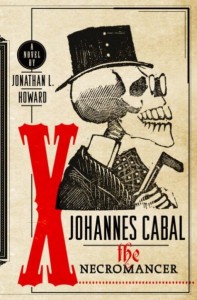 dapper in a too bright blue serge, came into the inner office singing:
dapper in a too bright blue serge, came into the inner office singing:
“Did you ever see a dream walking? Well, I did.” I love that song when sung by Bing—so I enthusiastically read on. What seemed like a million pages later, the detective was still running around trying to figure out how someone who is supposed to be dead and buried could leave fingerprints. Here’s a thought—he ‘s not really dead. End of mystery. Ugh.
A friend, seeing my desperate plight leant me The Red Leather Diary, an account of a young woman’s life in the ‘20s and ’30s from a diary accidentally found by a writer as she walked down a New York city street. No, it didn’t fall from the sky, or was sitting in the gutter—the story of how she came across it was far more interesting to me than the contents of the diary itself, so after the brief account of that, I was done.
So off to something completely different—Johannes Cabel, The Necromancer. Love the cover, love the idea, couldn’t abide the actual book. On paper, it looked like a perfect match—macabre, gothic, with a carnival to boot—it should have been a match made in heaven—unfortunately, the story was straight from hell, literally, and although very caustically witty and obviously well written, Johannes selling his soul to learn necromancy and wanting it back, left me cold. I guess Hell froze over.
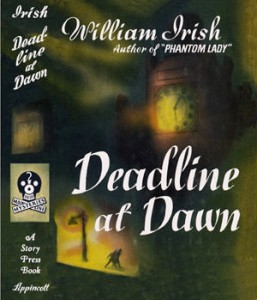 By this time I’m about to tear my split ended hair out if I can’t find something to jump start my dead book battery. So I turn to the master, the great Kahuna of dark suspense novels, Cornell Woolrich—and a book I’ve been meaning to read for decades—Deadline at Dawn—involving a couple of young adults who desperately want to leave the city behind but are being pursued by the law, and time. Should be a slam-dunk, as the TV broadcasters are fond of saying, right? And for a couple of chapters it seemed to be working out—but as in the case of A Free Man of Color, my interest petered out and I couldn’t force myself to pick it back up. This is unheard of for me. To be unable to continue the master is almost tragic. Trying not to dwell on the implications, I grabbed the next thing I see, and it’s a book called The Desperate Hours by Joseph Hayes. I embraced it as a life jacket as if going down on the Titanic. I’d seen the film, knew the entire plot—what could be simpler and easier to read? After 3 chapters, I admitted the iceberg won, I had frozen reading abilities. It was time to leave them alone and let them thaw on their own—stop trying to force my enthusiasm to return, and walk away from, gulp, books.
By this time I’m about to tear my split ended hair out if I can’t find something to jump start my dead book battery. So I turn to the master, the great Kahuna of dark suspense novels, Cornell Woolrich—and a book I’ve been meaning to read for decades—Deadline at Dawn—involving a couple of young adults who desperately want to leave the city behind but are being pursued by the law, and time. Should be a slam-dunk, as the TV broadcasters are fond of saying, right? And for a couple of chapters it seemed to be working out—but as in the case of A Free Man of Color, my interest petered out and I couldn’t force myself to pick it back up. This is unheard of for me. To be unable to continue the master is almost tragic. Trying not to dwell on the implications, I grabbed the next thing I see, and it’s a book called The Desperate Hours by Joseph Hayes. I embraced it as a life jacket as if going down on the Titanic. I’d seen the film, knew the entire plot—what could be simpler and easier to read? After 3 chapters, I admitted the iceberg won, I had frozen reading abilities. It was time to leave them alone and let them thaw on their own—stop trying to force my enthusiasm to return, and walk away from, gulp, books.
Which I did. I didn’t pick up another book for ‘possible’ reading again. For weeks. And weeks.
When the breakthrough finally arrived, I was stunned at what it was I found engrossing enough to wade all the way through. An obscure author, with a long forgotten title, The Desert Lake Mystery. Why this one and not any of the others, especially those far better written? I wish I knew, because then I’d bottle the formula and uncork it every time this stymied reading disease hit me.
For now, I’ve moved on to a Perry Mason, and am half way through—fingers crossed, he and Della don’t disappoint.

Perry Mason is to mysteries as Craig Claiborne is to cookbooks, In spite of their comforting familiarity, they are far smarter and elegant than they’re given credit for being. They’ll never steer you wrong.
Having written that, my own bete noir is fiction written in the present tense. I’ve probably missed out on some great reading, but it sets my teeth on edge enough that it’s just not worth it.
LOL. Teeth on edge? That’s funny–but in some cases, my are too. But the great classic crime fiction title can be sooooo satisfying. I’ve not recently found one, sadly. I was going to pen an article on Perry Mason–I need to research a bit more, first.
Look like really old books, but good!
Oh, I read “A free man of color” too! I just saw that after my first comment.
Seriously hats off to you that you had read these many books. I feel so sleepy when ever i try to read books/novels. After reading your post i can say now i come to know about names of many books..